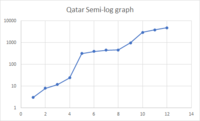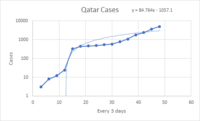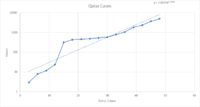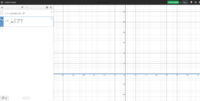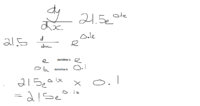writer2019
New member
- Joined
- Apr 1, 2019
- Messages
- 19
Hi Guys
I need some help in deriving an exponential equation using a semi log plot. I am quite stuck on how to do this. We are asked to model Corona Virus. I have decided to do Qatar1. On the site I saw a logarithmic graph but I don't know how to derive an exponential equation from that. Can someone guide me in the right path in doing so.
Part 2:
Using differential calculus find the rates of change on your model. Find the gradient function associated with your model and make eight estimates as to the rate of change of the spread of the virus at chosen points.
Part 2 I am able to do but I am unsure on how to do the first part that is derive an exponential equation using semi-log plotting.
1: https://www.worldometers.info/coronavirus/country/qatar/
I need some help in deriving an exponential equation using a semi log plot. I am quite stuck on how to do this. We are asked to model Corona Virus. I have decided to do Qatar1. On the site I saw a logarithmic graph but I don't know how to derive an exponential equation from that. Can someone guide me in the right path in doing so.
Part 2:
Using differential calculus find the rates of change on your model. Find the gradient function associated with your model and make eight estimates as to the rate of change of the spread of the virus at chosen points.
Part 2 I am able to do but I am unsure on how to do the first part that is derive an exponential equation using semi-log plotting.
1: https://www.worldometers.info/coronavirus/country/qatar/


